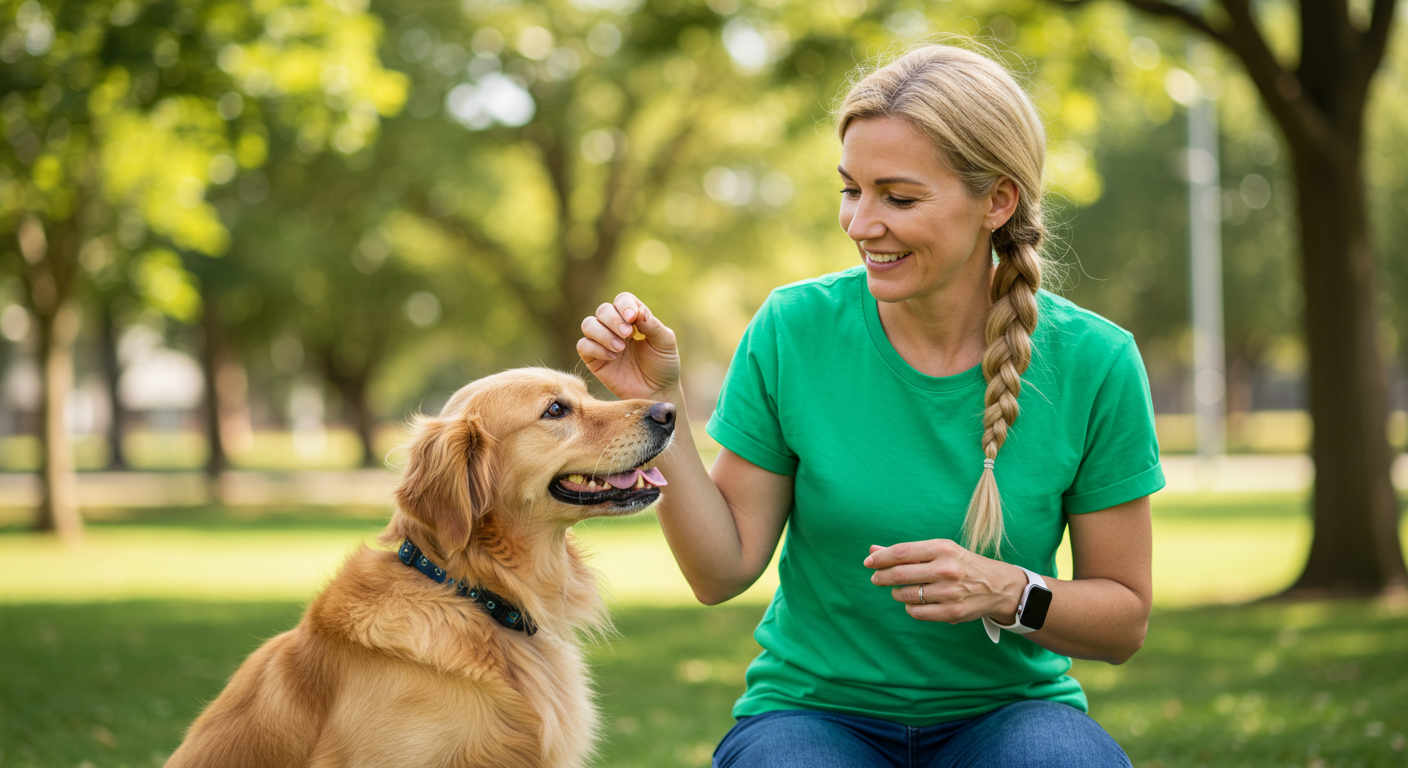Fear in dogs is more common than many pet owners realize. While some dogs may appear bold and confident, even the bravest pups can experience moments of fear or anxiety.
This comprehensive guide will help you identify the causes, symptoms, and treatments for fear in dogs, so you can help your furry friend feel safe and secure.
We’ll also answer key questions, such as why is my dog scared all of a sudden, and provide actionable solutions for how to overcome fear of dogs, whether it’s your pet or a dog you encounter in daily life.
By the end of this blog, you’ll have a deeper understanding of the emotional needs of anxious dogs and practical steps to build their confidence.
Table of Contents
- Understanding Fear in Dogs
- Causes of Fear in Dogs
- Signs of Fear in Dogs
- How to Overcome Fear in Dogs
- How to Calm an Anxious Dog
- Anxious Dog Breeds and Their Unique Needs
- Fear in Dogs Treatment Options
- Classes to Overcome Fear of Dogs
- Can Dogs Die from Anxiety Attacks?
- FAQs

Understanding Fear in Dogs
Understanding canine fear starts with knowing that dogs experience emotions much like humans.
Fear is a natural survival response, helping dogs avoid danger.
However, when fear becomes chronic or irrational, it can negatively impact their quality of life.
Dogs may exhibit fear through various behaviors such as trembling, hiding, barking, or even aggression.
These responses are often triggered by specific stimuli like loud noises, unfamiliar people, or past traumatic experiences.
It is important to identify the root cause of a dog’s fear to address it effectively.
Early intervention and understanding are key to helping a fearful dog regain confidence and sense of security.
Common scenarios triggering fear include encountering unfamiliar people, loud noises like fireworks, or sudden changes in their environment.
While fear can be temporary, chronic fear and anxiety require more attention.

Table: Difference Between Normal Fear and Chronic Anxiety
| Aspect | Normal Fear | Chronic Anxiety |
|---|---|---|
| Trigger | Specific and identifiable (e.g., loud noise, stranger) | Often vague or persistent without clear cause |
| Duration | Temporary, lasting for a short period | Long-lasting, often persistent over time |
| Intensity | Proportional to the threat or situation | Disproportionate or excessive relative to events |
| Behavioral Response | Temporary avoidance or defensive actions | Constant nervousness, restlessness, or behaviors |
| Physical Symptoms | Temporary (e.g., trembling, panting) | Chronic (e.g., pacing, destructive behavior) |
| Impact on Daily Life | Limited, rarely interferes with normal activities | Significant, often disrupts daily functioning |
| Resolving Mechanism | Resolves when the trigger is removed | May require training, therapy, or medication |
Fear in dogs becomes problematic when it disrupts their daily life, leading to health issues or behavioral problems.
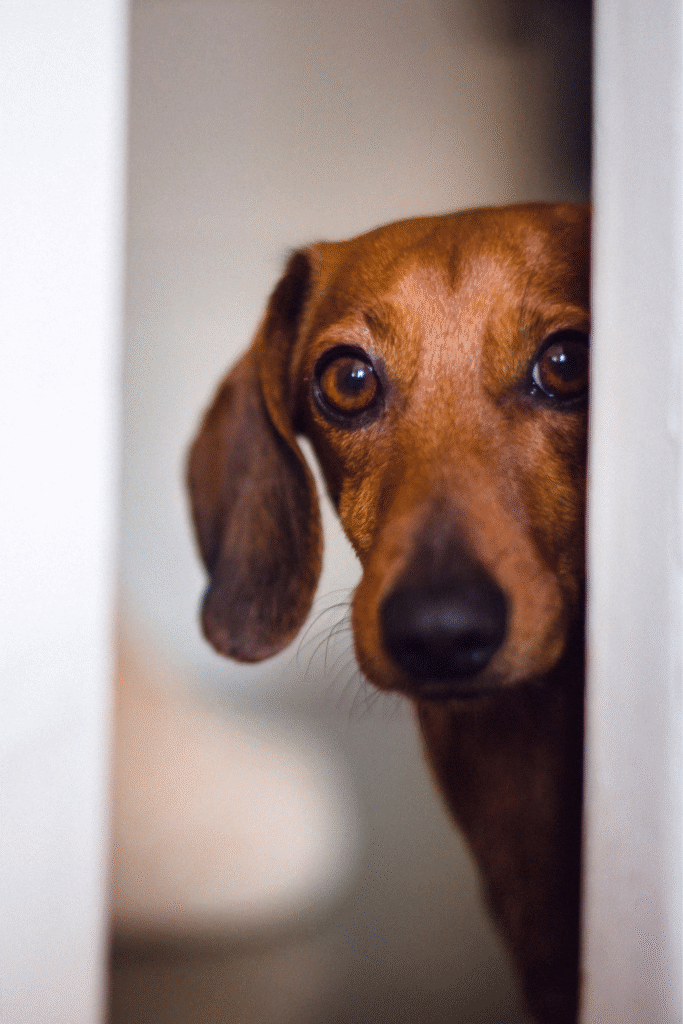
Causes of Fear in Dogs
Identifying causes of fear in dogs is essential for finding the right solutions. Fear can stem from genetics, life experiences, or environmental factors.
Common Causes of Canine Fear
- Lack of Socialization
Puppies not exposed to various experiences during their critical socialization period (3–14 weeks) often grow into fearful adults.
- Negative Experiences
Trauma, such as abuse or neglect, can lead to lingering fear.
- Environmental Changes
Moving homes, new family members, or even rearranging furniture can upset dogs.
- Loud Noises
Thunderstorms, fireworks, or construction noise are common fear triggers.
- Medical Conditions
Pain or untreated illnesses may contribute to sudden fear responses.
- Aging
Cognitive decline in senior dogs can lead to confusion and anxiety.
Knowing why your dog is scared all of a sudden can help pinpoint solutions and ease their discomfort.
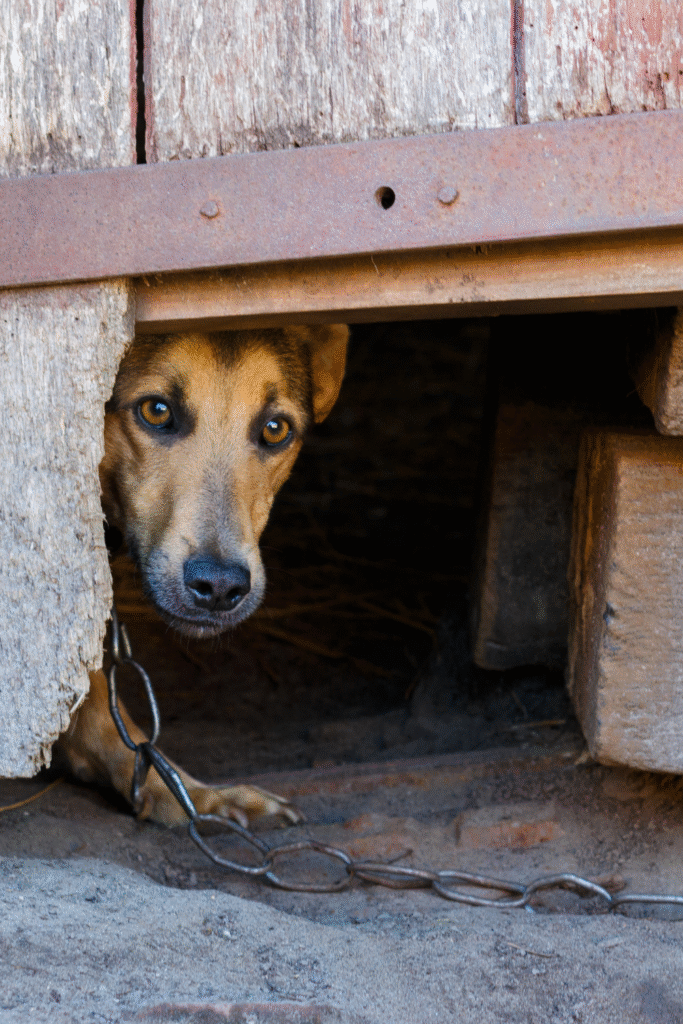
Signs of Fear in Dogs
Recognizing signs of fear in dogs allows you to address anxiety early. Some signs are more subtle than others, so it’s important to know what to look for.
- Trembling or Shaking
Physical shivers often indicate distress.
- Hiding or Avoidance
Dogs may seek refuge in small spaces when afraid.
- Excessive Barking or Howling
Vocalizing can be their way of expressing fear.
- Pacing or Restlessness
A scared dog might move nervously from one place to another.
- Tail Tucking
A tightly tucked tail signals discomfort or fear.
- Ears Pinned Back
Posture changes, such as flattening ears, are common fear indicators.
- Avoiding Eye Contact
A dog avoiding your gaze may feel intimidated.
By paying attention to these signs, you’ll know how to respond effectively and help your dog feel secure.
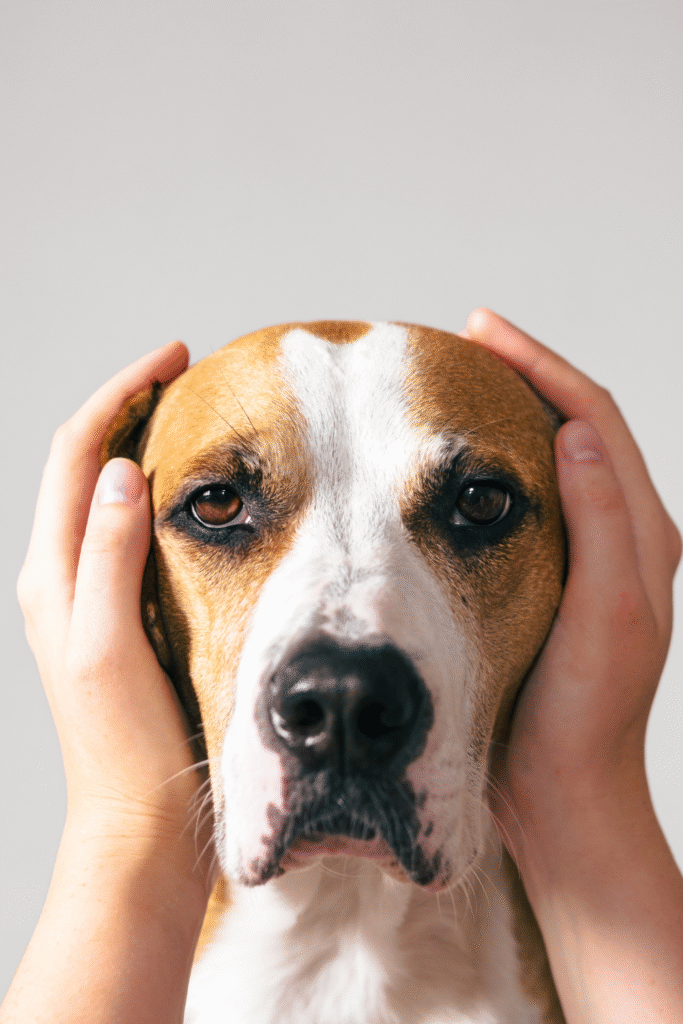
Signs of Fear in Dogs
Addressing fear requires patience and a tailored approach. These proven techniques can help your dog regain confidence over time.
Step-by-Step Guide
- Identify the Triggers
Start by observing what specifically causes your dog’s fear. This could be loud noises, new surroundings, unfamiliar people, or other animals. Take note of their reaction and the circumstances to better understand the root cause.
- Create a Safe Space
Provide a designated area where your dog feels secure. This could be a quiet room, a cozy crate, or any spot where they can retreat when overwhelmed. Make it comfortable with their favorite toys and bedding.
- Use Positive Reinforcement
Reward your dog with treats, praise, or affection when they exhibit calm behavior in fear-inducing situations. This method helps them associate positive experiences with their triggers.
- Gradual Desensitization
Slowly introduce your dog to their triggers in a controlled and non-threatening way. For instance, if your dog fears loud noises, start with low volumes and gradually increase as they show improvement.
- Consider Professional Training
If fear-related behaviors persist, consult a professional dog trainer or behaviorist. These experts provide tailored guidance and techniques to address your dog’s specific needs.
6. Use Positive Reinforcement
Reward your dog with treats, praise, or affection when they show bravery or calmness near their triggers. Positive reinforcement helps associate the trigger with pleasant experiences.
7. Stay Calm and Patient
Your dog can pick up on your emotions, so it’s important to remain calm and supportive when they are frightened. Avoid punishing or scolding your dog for their fear-based reactions.
By implementing these steps consistently, you can help your dog overcome fear and build lasting confidence.
Consistency and encouragement are key to overcoming canine fear.

How to Calm an Anxious Dog
Knowing how to calm an anxious dog is essential for moments of acute distress.
Quick Calming Techniques
- Speak softly and move slowly to avoid adding stress.
- Offer your dog their favorite toy or treat.
- Use calming music, as some dogs respond well to soothing sounds.
- Try a dog-specific anxiety vest for pressure therapy.
- Provide plenty of physical affection.
Reducing stress during high-anxiety moments helps prevent long-term issues.

Anxious Dog Breeds and Their Unique Needs
Some dog breeds are more prone to anxiety than others due to their genetic predisposition, history, or personality traits.
For instance, working breeds like Border Collies and German Shepherds can experience anxiety when they are under-stimulated or lack a clear purpose.
Similarly, small or toy dog breeds such as Chihuahuas and Dachshunds are known for their sensitivity and may display nervous behavior in new environments or around strangers.
To meet their unique needs, it is important to provide breed-specific care.
High-energy breeds often benefit from consistent exercise and mentally stimulating activities, such as puzzle toys or training exercises.
On the other hand, smaller or more timid breeds may thrive in a calm and predictable environment where they feel safe and secure.
Additionally, socialization plays a crucial role in reducing breed-specific anxiety.
Gradually introducing your dog to new situations, people, and other animals helps them feel more confident and adaptable.
Understanding your dog’s specific triggers and addressing them with positive reinforcement can significantly improve their overall well-being.
Examples of Anxious Dog Breeds
- Border Collies – Highly intelligent but sensitive to environmental changes.
- Chihuahuas – Prone to separation anxiety.
- Labrador Retrievers – Can become anxious when left alone.
- German Shepherds – Protective but prone to stress if untrained.
Understanding breed tendencies is a helpful step toward a happier, calmer dog.
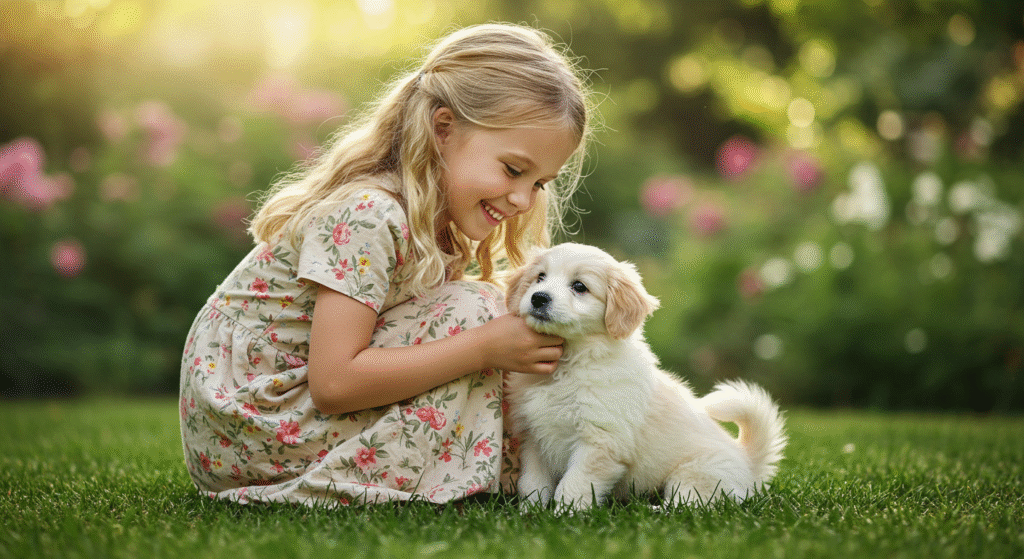
Fear in Dogs Treatment Options
Treating fear in dogs often requires a combination of patience, training, and sometimes professional intervention. Here are some effective treatment options:
- Counterconditioning
This technique involves changing a dog’s emotional response to a fearful stimulus by associating it with something positive. For example, if a dog is afraid of the vacuum cleaner, offering treats or rewards while the vacuum is in sight can help create a positive association.
- Desensitization
Desensitization gradually exposes the dog to the fear trigger at low levels, increasing exposure over time. This reduces their sensitivity and anxiety. For instance, if a dog is afraid of loud noises, playing recordings at a low volume and slowly increasing it over days or weeks can help.
- Behavioral Training
Professional trainers or behaviorists can assist in addressing specific fears. Using reinforcement-based training methods, they teach dogs to respond calmly to situations that previously caused stress.
- Calming Products
Products such as calming collars, pheromone sprays, or anxiety wraps can provide relief for anxious dogs. These tools are designed to help dogs feel safe and secure by mimicking natural comforting signals.
- Medication
For severe fear or anxiety, consulting a veterinarian about medication may be necessary. Antidepressants or anti-anxiety medications can be prescribed to help manage symptoms while other treatment modalities are implemented.
- Exercise and Enrichment
Keeping your dog physically active can help lower anxiety levels. Regular walks, playtime, and mental stimulation through puzzles or toys can significantly reduce stress.
- Creating a Safe Space
Providing a quiet, comfortable space for your dog can help them feel secure when they’re anxious. Crates, beds, or designated areas in the home can serve as “safe zones” for stressed pets.
- Avoiding Punishment
Punishing a fearful dog can exacerbate the problem and may lead to more intense fear. Instead, focusing on positive reinforcement helps build trust and confidence.
The specific approach will depend on the individual dog and the intensity of their fear.
A combination of techniques and a steady, consistent approach ensures the best outcome for helping your dog overcome their fears.
Always consult with a professional if you are unsure about your dog’s behavioral needs.
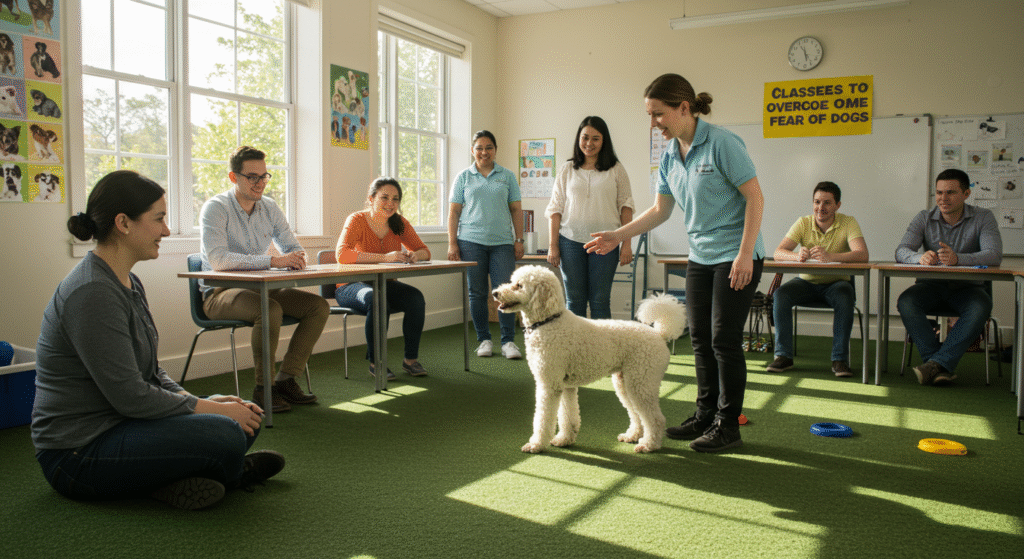
Classes to Overcome Fear of Dogs
Participating in specialized classes can be an effective way to overcome a fear of dogs.
These classes are often designed for individuals who may feel anxious or uncomfortable around dogs, helping them build confidence and gradually reduce fear.
Qualified trainers or counselors typically lead these sessions, guiding participants through a series of structured activities in a safe and controlled environment.
Classes may involve educational components, such as learning about canine behavior, understanding body language, and debunking common myths about dogs.
Practical exercises often include controlled interactions with carefully trained dogs, starting at a distance and progressing to closer engagements as participants grow more comfortable.
The pace of these classes is typically tailored to the individual, ensuring no one feels rushed or overwhelmed.
Over time, participants develop a better understanding of dogs, build trust, and learn techniques to manage their fears.
These classes are available in many communities and are an excellent resource for anyone seeking to grow more confident and at ease around dogs.
Always ensure that you select a reputable program with experienced professionals to guide the process.
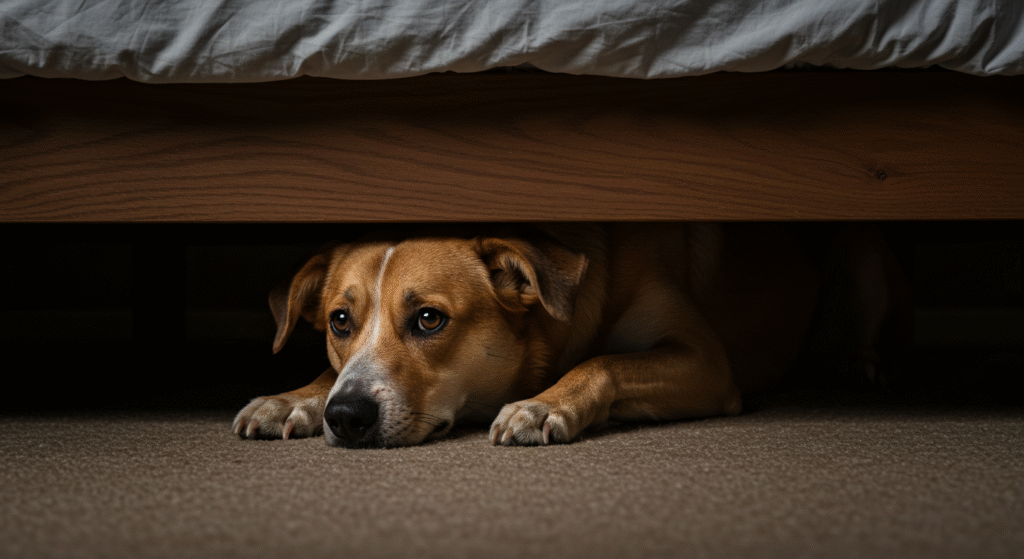
Can Dogs Die from Anxiety Attacks?
While it is rare, severe anxiety attacks in dogs can potentially lead to fatal outcomes, primarily if the anxiety results in significant physical and physiological distress.
During periods of intense anxiety, a dog may experience a racing heartbeat, rapid breathing, and elevated cortisol levels, which could strain their cardiovascular system.
For dogs with preexisting heart conditions or other health problems, the excessive stress caused by anxiety attacks could exacerbate these underlying issues, increasing the risk of complications.
Additionally, in their panicked state, some dogs may exhibit behaviors such as trying to escape or destroying objects around them, which could result in accidents or injuries.
For instance, a dog may attempt to chew through doors or windows, choke on objects, or become stuck in confined spaces during an anxiety episode, posing life-threatening risks.
Dog owners must work proactively to recognize the signs of extreme anxiety and address them effectively.
Management strategies can include behavior modification training, providing a calming environment, or consulting a veterinarian or animal behaviorist for possible medication or specialized treatment plans.
Early intervention is crucial as chronic stress and anxiety can degrade a dog’s quality of life over time, making it essential to prioritize their emotional well-being.
FAQs
- What are the common signs of anxiety in dogs?
Common signs of anxiety in dogs include excessive barking, pacing, panting, trembling, destructive behavior, and changes in appetite or sleep patterns. Some dogs may also exhibit repetitive behaviors or attempt to hide.
- Can anxiety in dogs be treated without medication?
Yes, anxiety in dogs can often be managed without medication through behavior modification, creating a calm and predictable environment, using calming products like pheromone diffusers, and providing plenty of physical and mental stimulation.
- When should I consult a veterinarian about my dog’s anxiety?
If your dog’s anxiety is severe, persistent, or impacting their quality of life, it is important to consult a veterinarian. They can rule out underlying medical issues and help develop a targeted treatment plan.
- Are some dog breeds more prone to anxiety than others?
While anxiety can affect any dog, certain breeds, like German Shepherds, Border Collies, and Labrador Retrievers, may be more prone to anxiety due to their temperament and energy levels. Individual personalities also play a significant role.
- How long does it take to see improvements in an anxious dog?
The time it takes to see improvements depends on the severity of the anxiety and the treatment methods used. Some dogs may show progress within weeks, while others may require months of consistent effort and adjustments. Patience and persistence are key.
6.How do you treat fear of dogs?
Treating fear of dogs typically involves gradual exposure therapy, positive reinforcement, and sometimes professional counseling. Building confidence and learning about dog behavior can help alleviate fears over time.
7. How to calm dogs’ anxiety?
Calming a dog’s anxiety can involve creating a safe and comfortable environment, using calming aids like soothing music or anxiety wraps, providing regular exercise, and using positive reinforcement. Consulting a veterinarian or animal behaviorist may also help address more severe anxiety issues.
Final Thought
Understanding and addressing your dog’s behavior is essential for fostering a strong, positive relationship. Patience, consistency, and a willingness to learn are key when guiding your furry friend through challenges. By providing love, care, and proper training, you can help ensure a happy and healthy life for both you and your dog.
